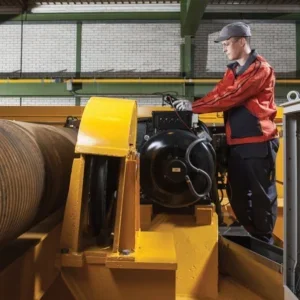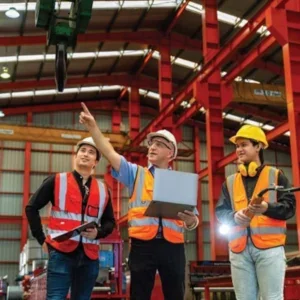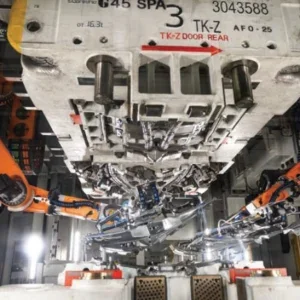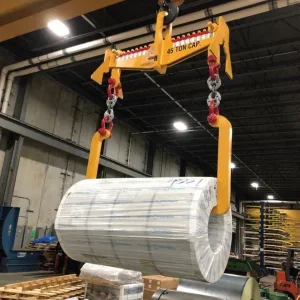Our ‘Project of the Month’ is located in the port of Gdansk, a former Hanseatic port on the north coast of Poland, where Liebherr has delivered its eighth ultra-large container crane. We also report on Kalmar’s project to upgrade four ZPMC shipto- shore cranes at the Eurogate Tanger container terminal in Morocco.
And Julian Champkin reports on the use of cranes in intermodal applications—that is, where goods, often in shipping containers, are moved between two modes of transport. That can be from a train to another train, from a lorry to a ship, and so on—and as you would imagine, ports play a huge part in this sector. At those ports, gantry cranes—both rubber-tyred gantry cranes and rail-mounted gantry cranes—and jib cranes are used to lift ships and containers.
This all fits within the remit of Hoist, which has always been, in a bite-size summary, to cover permanently-installed overhead lifting equipment. The ‘permanently-installed’ distinguishes us from our companion magazine Cranes Today, which covers the cranes used in construction projects, which will remain on site for anything from a few hours to a couple of years before being used elsewhere. The equipment covered in Hoist, even if it is mobile by virtue of being on wheels such as with rubber-tyred gantries, will remain at the same site for the duration if its working life. And the ‘overhead’, of course, specifies that we don’t cover forklift trucks, for example, or aerial work platforms.
For those reasons, we’ll be looking into some of the projects and technology taking place in the dockside sector. In fact, Hoist did previously cover this area, but took a step back when we launched Dockside back in 2017, our title that exclusively covered port lifting equipment. With that publication now on a hiatus, we’re bringing coverage back into Hoist.
From an editorial perspective, it’s an exciting sector to be able to report on—even from the fairly simple point of view of allowing us to include the very impressive photographs of these often very large cranes in action. Digging deeper, the level of engineering involved and the technologies employed are similarly impressive, and we have features planned for 2020 on to keep you up to date on the latest market activity and innovations.
Also in this issue, we have a feature on a topic that we’ve covered regularly in recent issues, which is that of recruitment. As I’ve mentioned in previous comments, our industry, like many industries, is facing what’s often called ‘brain drain’—where a generation of experienced engineers retire, taking with them their knowledge and, of course, requiring them to be replaced with new staff.
This necessitates forward planning, to ensure that new workers are trained and brought up to speed before the more experienced staff fully leave the industry, and also an industry-wide effort to attract school-leavers, graduates and other workers into the sector.
As you’ll read in the feature, this can take the form of a variety of initiatives, schemes and programmes. Turkish crane manufacturer Güralp is welcoming interns from Salford University in the UK, to help them gain experience of what it’s like to work in the lifting industry; Spain’s GH is running two award schemes, one inviting college students to submit innovations involving GH-manufactured products, and one through which entrepreneurs can submit their own proposals and developments; and, targeting an even younger demographic, Ross Moloney, CEO of LEEA, discusses the organisation’s Think Lifting scheme, which aims to alert 11–13-year-olds, and careers advisors in schools, to the possibility of joining our industry.






